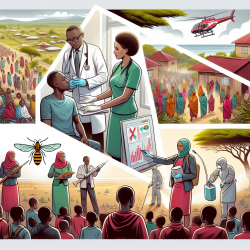Introduction
In the realm of adolescent health, creating environments that promote physical activity is a critical challenge. The International Physical Activity and Built Environment Study of Adolescents (IPEN Adolescent) offers groundbreaking insights into how the built environment influences physical activity, sedentary behavior, and weight status among adolescents. This extensive study spans 15 countries, providing a rich dataset that can inform practitioners about the best practices for fostering active lifestyles in young people.
Understanding the IPEN Adolescent Study
The IPEN Adolescent study is a multicountry observational research project that examines the associations between the built environment and adolescent physical activity. The study involved adolescents aged 11-19 years from diverse socioeconomic backgrounds and geographic locations. Data were collected using surveys, accelerometers, and geographic information systems (GIS) to measure physical activity levels and environmental factors.
Key Findings
The study revealed several key findings that can help practitioners improve outcomes for adolescents:
- Built Environment and Physical Activity: The study found significant associations between the built environment and physical activity levels. Adolescents living in areas with higher walkability, access to recreational facilities, and safe pedestrian environments were more likely to engage in physical activity.
- Sedentary Behavior: Sedentary behavior, particularly screen time, was inversely related to the availability of active transportation options and recreational facilities. This highlights the importance of creating environments that encourage movement over sedentary activities.
- Weight Status: The study also identified correlations between the built environment and weight status, suggesting that environments conducive to physical activity can help mitigate obesity in adolescents.
Implications for Practitioners
Practitioners can leverage these findings to enhance their strategies for promoting physical activity among adolescents:
- Advocate for Built Environment Changes: Encourage local governments and communities to invest in infrastructure that promotes physical activity, such as sidewalks, bike paths, and recreational facilities.
- Promote Active Transportation: Encourage adolescents to walk or bike to school and other destinations. This can be supported by ensuring safe routes and educating families about the benefits of active transportation.
- Design Interventions Based on Data: Use the study's data to tailor interventions that address specific environmental barriers to physical activity in your community.
Encouraging Further Research
While the IPEN Adolescent study provides valuable insights, it also highlights the need for further research. Practitioners are encouraged to explore additional factors that influence adolescent physical activity and to consider longitudinal studies to better understand causal relationships.
To read the original research paper, please follow this link: International Physical Activity and Built Environment Study of adolescents: IPEN Adolescent design, protocol and measures.










